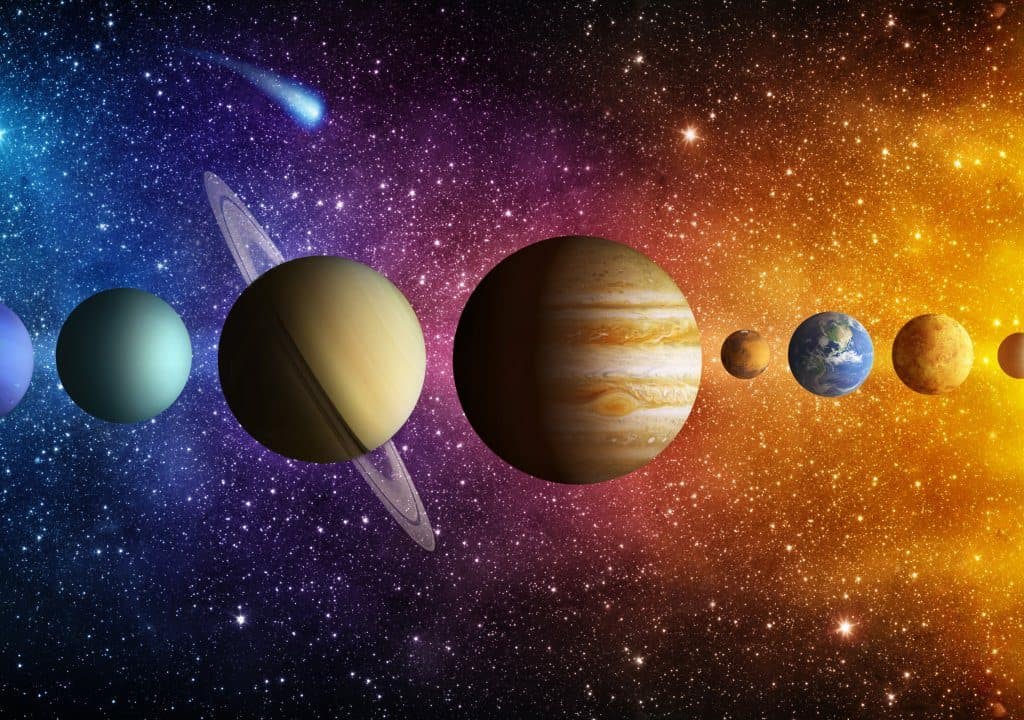At the beginning of June, astronomy enthusiasts will have the opportunity to witness a fascinating celestial event: a planetary alignment. This phenomenon, popularized on the internet as a “planet parade,” has generated significant anticipation. However, despite the excitement, it is important to approach this event with a clear and realistic understanding of what it actually entails.
Tips for Observing the Planetary Alignment on June 3, 2024
In recent months, we have witnessed notable astronomical phenomena, such as the total solar eclipse in April and the intense solar storm in May, which have fueled public interest in the night sky. This article breaks down what we can expect from the upcoming planetary alignment, debunks myths and exaggerations and offers practical tips for observers.
What is a Planetary Alignment?
A planetary alignment occurs when several planets in the solar system align in the same region of the sky from our perspective on Earth.
On this occasion, the planets involved will be Mercury, Mars, Jupiter, Saturn, Uranus and Neptune. This type of event is not as rare as one might think, although the number of planets and the clarity with which they can be seen vary.
The alignment expected for early June has been described as a “planet parade,” suggesting that all these celestial bodies will be visible to the naked eye. However, this description has led to misunderstandings. In reality, only two of these planets will be visible without the aid of telescopes or binoculars and none of them will be particularly bright or easy to observe under normal conditions.
Debunking Myths and Exaggerations
An article by Star Walk, a popular planetarium app for smartphones, is one of the main sources of misinformation about this event. The article suggests that an impressive alignment of six planets will be visible, but it does not clarify that only two will be visible to the naked eye.
Here is a breakdown of what can really be expected:
- Jupiter: Although it is one of the brightest planets, it will be very close to the Sun at dawn, making it difficult to observe.
- Saturn: It may be visible, but it will be low on the horizon and its brightness will not be notable enough to stand out easily.
- Mars, Mercury, Uranus and Neptune: These planets will not be visible to the naked eye. Uranus and Neptune, in particular, require telescopes to be observed under any circumstances.
Observation Challenges and Practical Tips
Observing these planets presents challenges due to the dawn light and the low position on the horizon of several of them. Here are some tips for those who wish to try:
- Use binoculars or a telescope: Although only Jupiter and Saturn might be seen unaided, a good pair of binoculars or an amateur telescope can greatly enhance the experience.
- Find a place with a clear horizon: Observation will be easier if you can see the horizon without obstructions, such as buildings or trees.
- Consult astronomy apps: Apps like Stellarium or SkySafari can help you locate the planets in the sky, providing you with a precise guide to their positions.
Astronomical Context
The Relevance of Planetary Alignments
Planetary alignments are not just a visual spectacle; they have great relevance in astronomy. These configurations allow us to study the gravitational interactions between the planets and their influence on their orbits. Additionally, they provide an excellent opportunity for both amateur and professional astronomers to make detailed observations.
Expert Opinions
To contextualize the importance of this event, we consulted Dr. María González, an astronomer at the Institute of Astrophysics of the Canary Islands: “Although these alignments are not extremely rare, each one offers us a unique window to observe planetary movements and improve our models of the solar system’s dynamics.”
The recent interest in the upcoming planetary alignment has sparked considerable debate about its possible impacts and the true extent of this phenomenon. According to several scientific studies, although planetary alignments can have minor effects on solar activity, these are not as significant as some myths suggest.
An article in Nature explains that tidal forces generated by planetary positions can slightly influence solar activity. However, the magnitude of these effects is quite limited and does not compare to other more dominant factors affecting the Sun’s behavior.
Additionally, a peer-reviewed study in Frontiers in Astronomy discusses how the complex dynamics of the planetary system can be described using general harmonic models. These models help identify certain periodicities in solar activity that coincide with the orbital cycles of planets like Jupiter and Saturn. Nevertheless, these effects are not sufficient to cause drastic changes in the solar cycle, such as those observed during events like the Maunder Minimum.
Another study published in Solar Physics corroborates the influence of planetary tidal forces on the 11-year solar cycle. However, it also points out that these effects, although present, are secondary and need to be integrated with other mechanisms in solar dynamo models for a better understanding.
Impact and Recommendations
How and Where to Observe
To maximize your observation experience, here are some recommendations:
Best time to observe: Just before dawn on June 3 will be the best time to attempt to see the alignment.
Equipment: Besides binoculars and telescopes, consider using a camera with good zoom capabilities to capture images.
Useful apps: In addition to Star Walk, other apps like Stellarium and SkySafari can provide real-time star maps, helping you locate each planet more precisely.
Practical Recommendations
Prior preparation: Familiarize yourself with the night sky using the mentioned apps before the event.
Weather conditions: Check the weather forecast; a clear sky is essential for good observation.
Social media and astronomy communities: Join astronomy observation groups on social media to share and compare your observations with other enthusiasts.
Final Conclusion
Although the planetary alignment in June will not be as spectacular as some rumors suggest, it remains a wonderful opportunity to look up at the sky and marvel at the cosmic ballet unfolding above us. As more people become interested in astronomy, events like these help increase our appreciation and understanding of the universe.
We encourage you to prepare well, adjust your expectations to reality and enjoy this event. Don’t forget to share your experiences and observations on social media or astronomy communities, thus contributing to greater knowledge and enthusiasm for observing the night sky.




